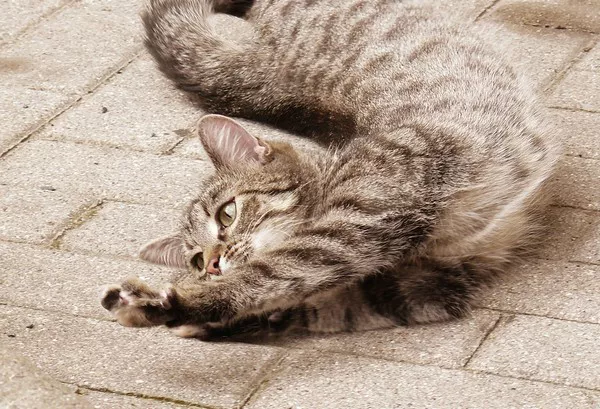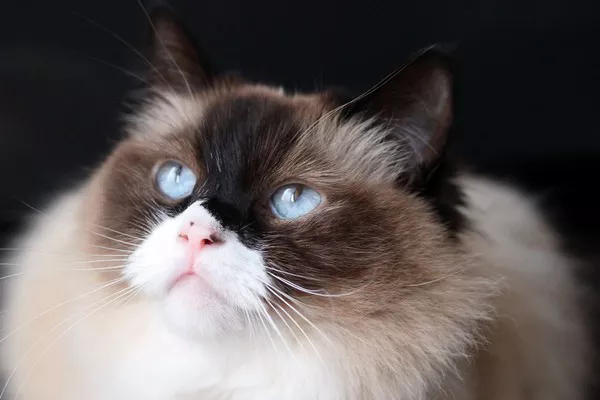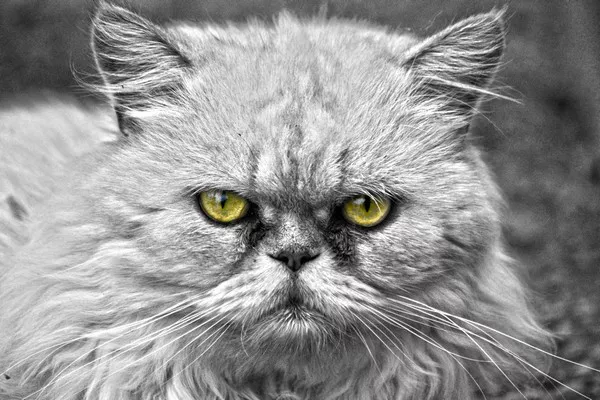Persian cats are renowned for their luxurious long fur, striking eyes, and gentle demeanor, making them one of the most popular cat breeds worldwide. However, their unique physical characteristics, particularly their flat faces, contribute to a range of health problems. This article delves into the common health issues faced by Persian cats, offering insights into their causes, symptoms, and management.
Understanding Persian Cat Anatomy
The Persian cat’s distinct appearance results from selective breeding, which has led to a brachycephalic (flat-faced) skull structure. While this gives Persians their characteristic look, it also predisposes them to several health problems. Their short noses, large eyes, and dense coats, while visually appealing, can contribute to a variety of medical issues.
1. Respiratory Issues
One of the most significant health problems in Persian cats is related to their brachycephalic anatomy, which can cause severe respiratory issues.
Brachycephalic Airway Syndrome
This syndrome encompasses a range of airway abnormalities that obstruct breathing. Symptoms include:
Noisy Breathing: Due to narrowed nasal passages.
Snoring: Even when awake, indicating restricted airflow.
Labored Breathing: Especially after exercise or in stressful situations.
Management often involves lifestyle adjustments, such as keeping the cat cool and minimizing stress, and in severe cases, surgical intervention to widen the airways.
Nasal Obstruction and Infections
Persian cats are prone to chronic nasal obstructions and infections because of their flat faces. The reduced nasal passage size makes it difficult for these cats to clear mucus and other debris, leading to:
Chronic Nasal Discharge: Persistent mucus buildup.
Frequent Sneezing: A response to nasal irritation.
Secondary Infections: Bacterial or fungal infections due to trapped mucus.
Treatment typically involves antibiotics for infections, and in some cases, surgical correction of nasal passages.
2. Ocular Problems
The large, protruding eyes of Persian cats, while beautiful, are highly susceptible to various ocular issues.
Epiphora (Excessive Tearing)
Persian cats often experience excessive tearing, which can lead to staining of the fur around the eyes. This condition is primarily due to their facial structure, which can cause blockages in the tear ducts. Management includes:
Regular Cleaning: To prevent fur staining and infection.
Tear Duct Flushing: Performed by a veterinarian to clear blockages.
Corneal Ulcers
The prominent eyes of Persian cats are more vulnerable to injuries and corneal ulcers. Symptoms include:
Squinting: To reduce eye pain.
Eye Discharge: Often a sign of infection.
Cloudy or Red Eyes: Indicating inflammation.
Prompt veterinary care is essential to treat ulcers and prevent permanent damage.
Entropion
Entropion is a condition where the eyelids roll inward, causing the eyelashes to rub against the eye surface. This can lead to:
Irritation and Inflammation: Due to constant friction.
Corneal Damage: Potentially leading to vision loss.
Surgical correction is usually required to prevent ongoing damage and discomfort.
3. Dental Problems
The short, flat faces of Persian cats can lead to several dental issues.
Malocclusions
Misalignment of the teeth (malocclusion) is common in Persian cats due to their brachycephalic skull structure. This can cause:
Difficulty Chewing: Leading to dietary issues.
Tooth Wear and Damage: From abnormal contact between teeth.
Oral Pain: Resulting in behavioral changes.
Regular dental check-ups and, if necessary, orthodontic treatment can help manage these issues.
Periodontal Disease
Due to crowded teeth and difficulty in maintaining oral hygiene, Persian cats are at a higher risk of periodontal disease. Symptoms include:
Bad Breath: Indicating bacterial buildup.
Inflamed Gums: Often a sign of gingivitis.
Tooth Loss: In severe cases.
Preventive care, including regular brushing and professional cleanings, is crucial for maintaining oral health.
See Also: What Do Ragdoll Kittens Eat?
4. Skin and Coat Problems
The long, dense fur of Persian cats, while stunning, can predispose them to various skin and coat issues.
Matted Fur
Persian cats are prone to matting due to their thick, long fur. Matted fur can cause:
Skin Irritation: Leading to scratching and potential infections.
Restricted Movement: In severe cases where mats form tightly against the skin.
Regular grooming, including brushing and occasional trimming, is essential to prevent matting.
Dermatitis
Skin inflammation (dermatitis) is common in Persian cats, often due to:
Allergies: To food, environmental factors, or grooming products.
Parasites: Such as fleas or mites.
Infections: Bacterial or fungal.
Treatment involves identifying and eliminating the cause, alongside using medicated shampoos or topical treatments.
Seborrhea
Seborrhea is a condition characterized by flaky, itchy skin, and excessive dandruff. It can be caused by:
Genetic Factors: Common in Persian cats.
Underlying Health Issues: Such as hypothyroidism or allergies.
Management includes medicated shampoos and addressing any underlying health problems.
5. Renal Issues
Persian cats are genetically predisposed to certain renal (kidney) conditions, which can severely impact their health.
Polycystic Kidney Disease (PKD)
PKD is a genetic disorder common in Persian cats, characterized by the development of multiple cysts in the kidneys. Symptoms typically appear between 3 and 10 years of age and include:
Increased Thirst and Urination: Indicating kidney dysfunction.
Weight Loss and Poor Appetite: Due to reduced kidney function.
Lethargy and Weakness: As the disease progresses.
There is no cure for PKD, but management involves regular monitoring, a specialized diet, and medications to support kidney function.
Chronic Kidney Disease (CKD)
CKD is prevalent in older Persian cats and involves the gradual loss of kidney function. Symptoms are similar to PKD and include:
Increased Thirst and Urination
Weight Loss and Poor Appetite
Lethargy and Vomiting
Early diagnosis and management through diet, hydration, and medication can improve quality of life and slow disease progression.
6. Cardiovascular Problems
Certain cardiovascular issues are also more common in Persian cats.
Hypertrophic Cardiomyopathy (HCM)
HCM is a condition where the heart muscle thickens, leading to reduced heart function. Symptoms include:
Difficulty Breathing: Especially after exercise.
Lethargy: Due to reduced oxygen circulation.
Heart Murmurs: Detected during veterinary exams.
Regular cardiac screenings and medications to manage heart function are crucial for cats with HCM.
Gastrointestinal Issues
Persian cats can experience various gastrointestinal problems, often related to their dietary habits and genetic predispositions.
Hairballs
Due to their long fur, Persian cats are prone to hairballs, which can cause:
Vomiting: Often after grooming.
Constipation: From ingested fur blocking the digestive tract.
Regular grooming and hairball-preventive diets or supplements can help manage this issue.
Digestive Sensitivities
Some Persian cats have sensitive digestive systems, leading to:
Diarrhea or Constipation: From dietary intolerances or changes.
Vomiting: Often due to dietary indiscretion.
A stable, high-quality diet and avoiding sudden changes in food can help maintain digestive health.
Conclusion
Persian cats, with their unique beauty and gentle temperament, require special care to manage their predisposition to various health problems. Understanding the common issues, from respiratory and ocular problems to renal and cardiovascular diseases, allows owners to provide the best possible care for their feline companions. Regular veterinary check-ups, a balanced diet, and diligent grooming are essential to ensure a healthy, happy life for Persian cats. By addressing these health concerns proactively, Persian cat owners can enjoy many years of companionship with their beloved pets.

























